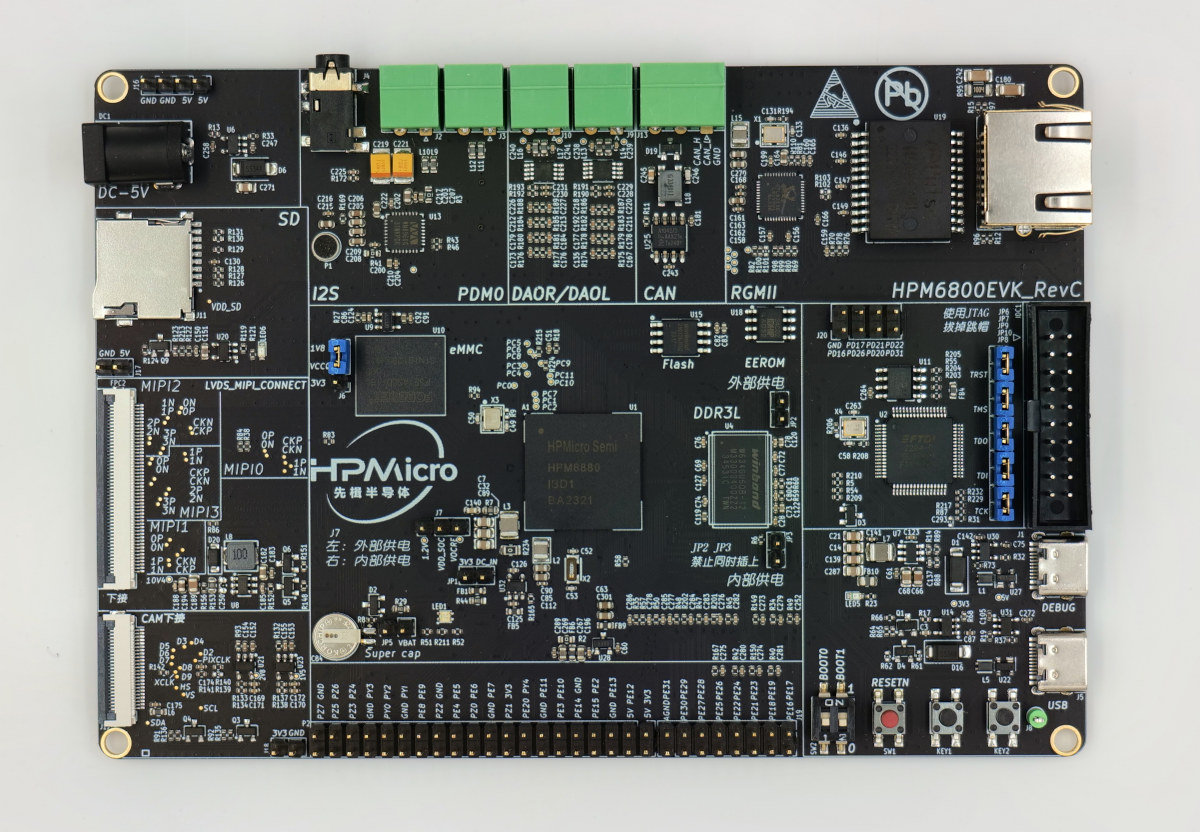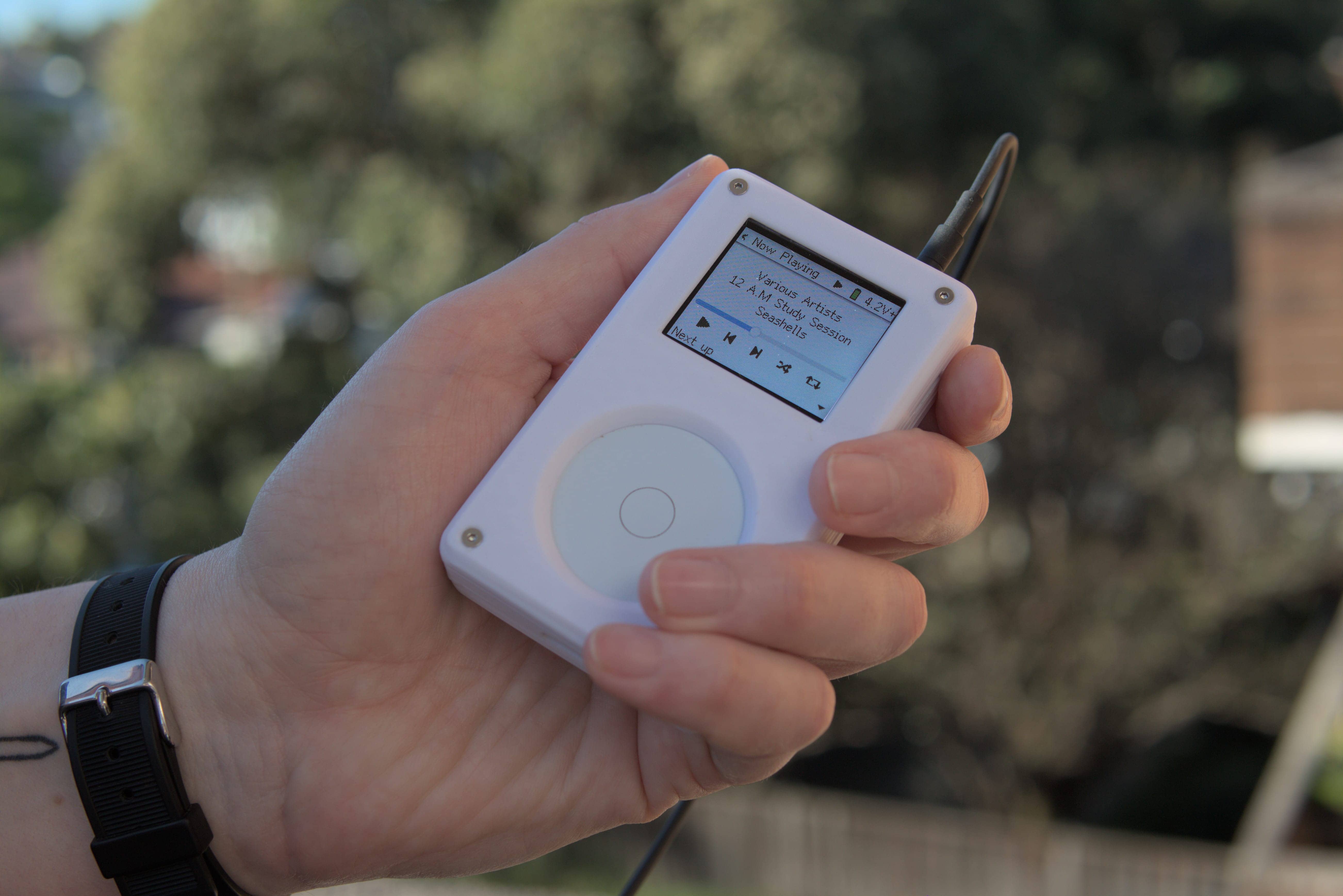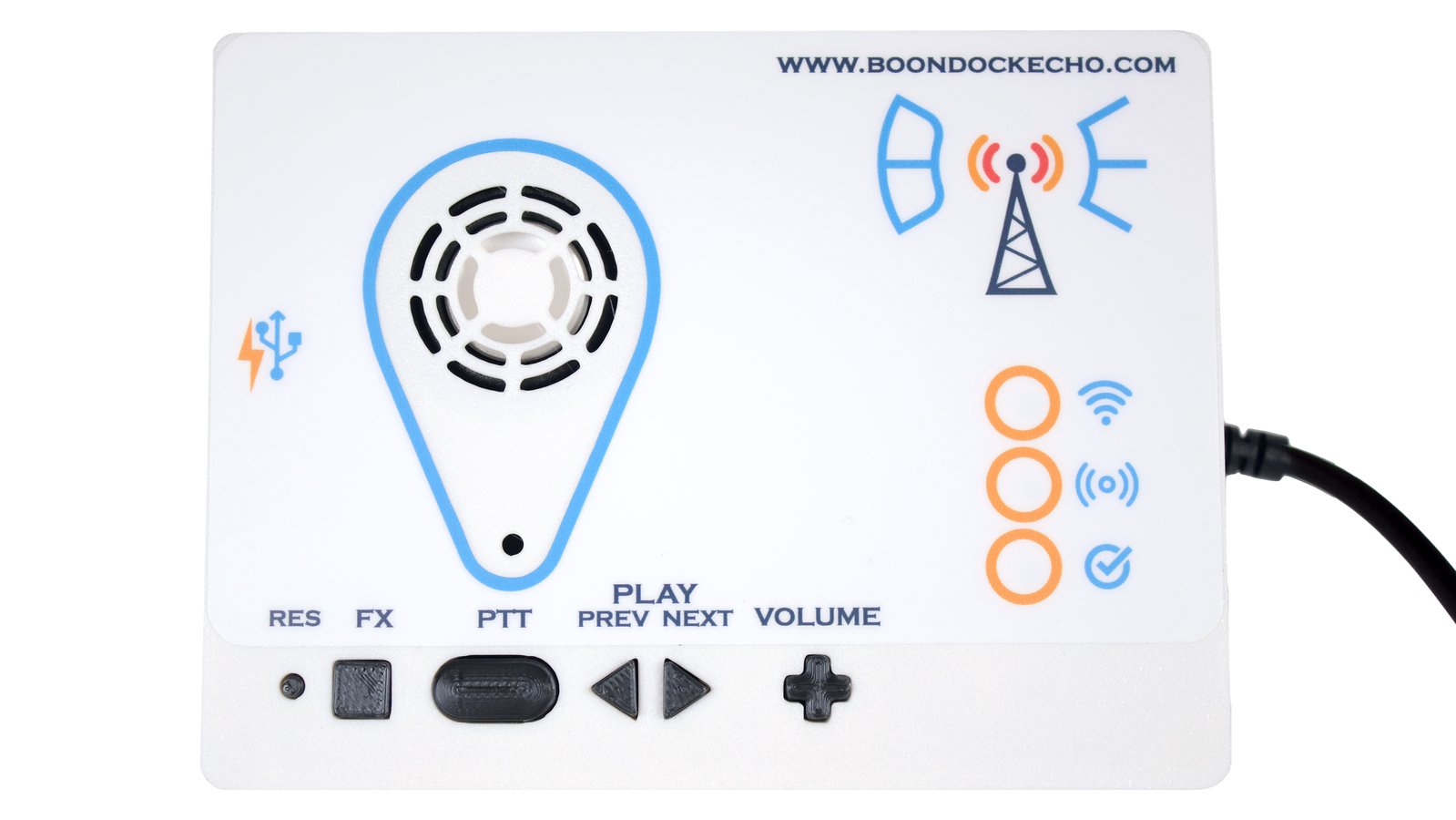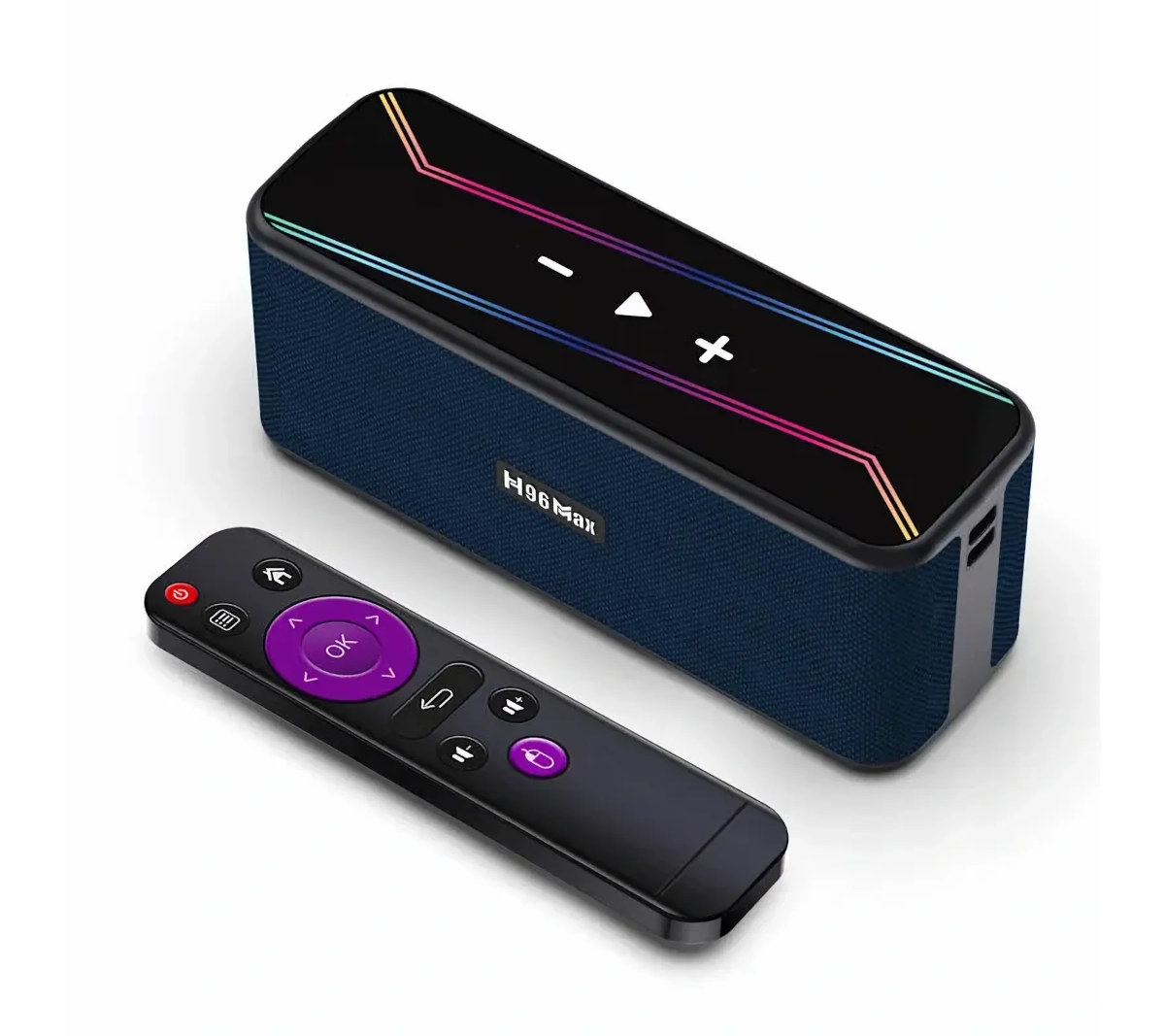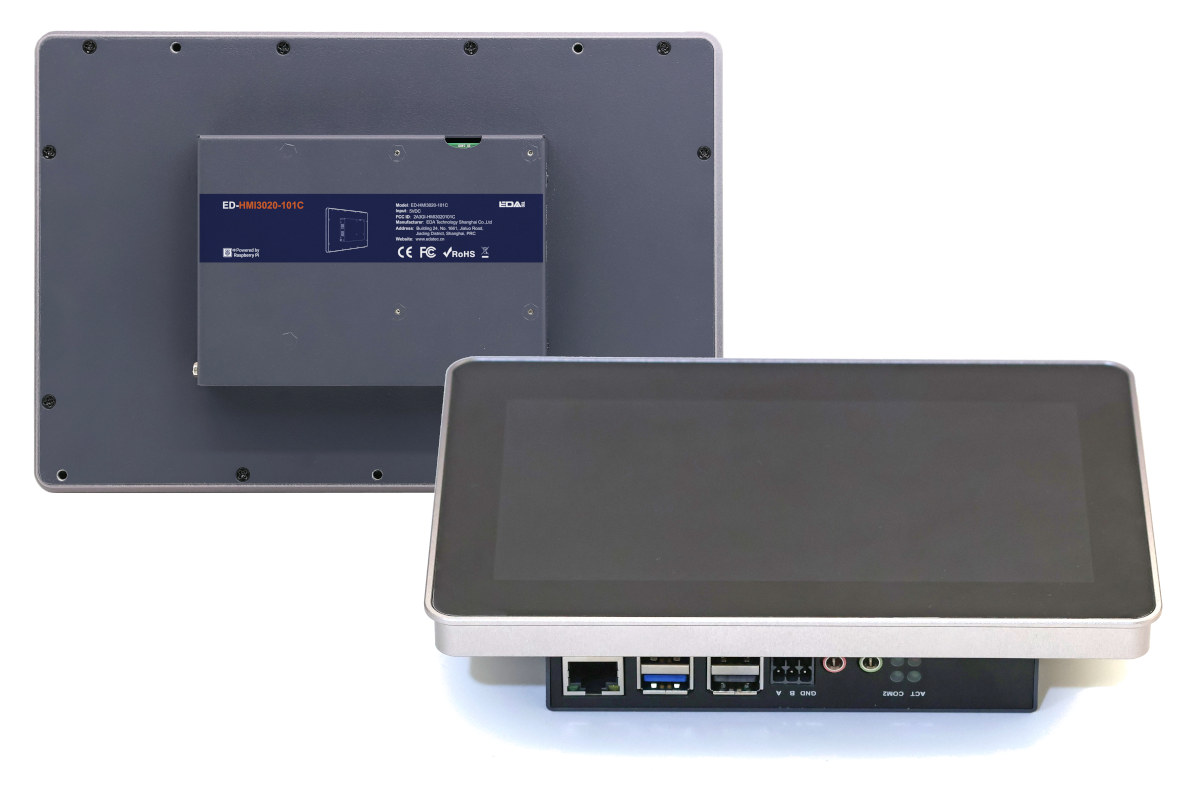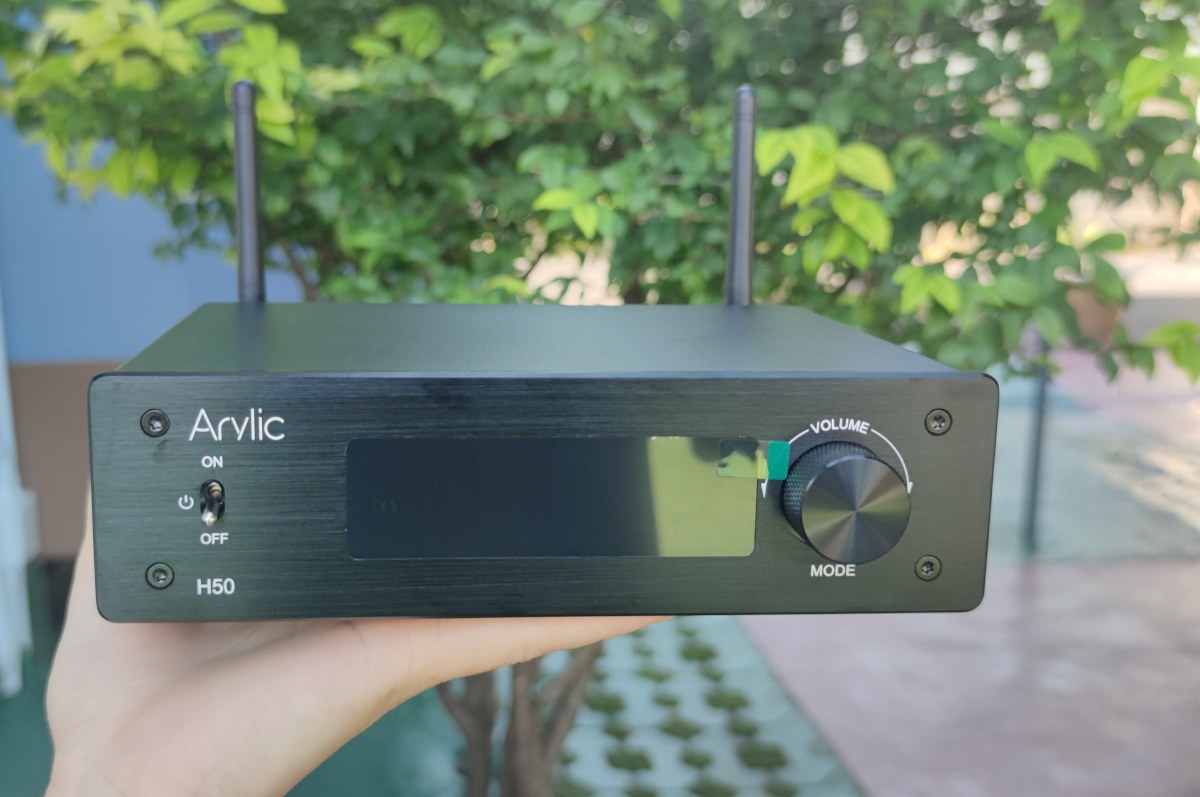HPMicro HPM6800 is a family of high-end RISC-V microcontrollers clocked up to 600 MHz integrating a VeriSilicon Vivante 2.5D GPU with support for the OpenVG 1.1 vector graphics API, and peripherals making it suitable for digital dashboard displays and human-machine interfaces (HMI). The family is comprised of three parts: the HPM6830 without video support, the HPM6850 with 2D graphics and video input/outputs, and the HPM6880 adding support for the 2.5D OpenVG GPU from VeriSilicon. All variants come with 1064KB SRAM, support for external DDR2/DDR3/DDR3 memory, NOR, PSRAM and eMMC flash, audio interfaces, and a range of peripherals with eight CAN FD interfaces, gigabit Ethernet, USB high-speed, and many more. HPMicro HPM6800 specifications: CPU – Single core 32-bit RISC-V (RV32-IMAFDCP) processor @ 600MHz with 32KB I/D Cache (3390 CoreMark) Memory 1064 KB SRAM with 256KB ILM + 256KB DLM in the RISC-V core, 512KB AXI SRAM, 32KB AHB SRAM, and 8KB […]
Tangara is a portable, open-source music player based on an ESP32 MCU (Crowdfunding)
Tangara is a portable music player that is out to make MP3 players cool again. With an iPod-inspired design and an ESP32 module at its core, Tangara presents an open-source and nostalgic way to listen to your favorite music and podcasts. The ESP32-WROVER-E at the core of the music player is the main microcontroller but it also features a co-processor, a Microchip SAMD21, which is responsible for USB communication and power management. We have covered the ESP32-WROVER-KIT, a development kit for the ESP32-WROVER and ESP-WROOM-32 line of modules with a JTAG interface and an LCD. The Tangara music player can output audio through a 3.5mm headphone jack or Bluetooth, although Bluetooth is currently limited to the default SBC codec. Tangara is the brainchild of Australian tech company Cool Tech Zone and is aimed at the portable media player community at large. This is reflected in many of the design choices […]
The Boondock Echo is an internet-connected ham radio powered by the ESP32-A1S devkit (Crowdfunding)
The Boondock Echo is an open-source, internet-backed recording and playback device for two-way devices. It can denoise, transcribe, translate, and send emails on hearing keywords/call signs. It is a low-cost solution for timeshift radio communication that enables users to monitor frequencies and record audio from a connected radio. Captured messages are uploaded to a server and transcribed using OpenAI. On the cloud server, the audio messages also pass through some DSP (digital speech processing) algorithms for noise reduction and volume normalization to enhance their clarity and usability. The Boondock Echo is aimed at amateur radio operators and first responders in remote areas and during emergencies, situations where traditional two-way radios tend to be unclear and unreliable. Multiple devices can be linked together to form a ‘dockpack’ and monitor/record multiple frequencies at once. Boondock Echo specifications: Mainboard – ESP32-A1S (ESP32 Audio Kit) running at up to 240MHz Expansion Board – Boondock […]
Rockchip RK3528 Android 13 TV Box doubles as a Bluetooth speaker
The H96 Max M7 is a Rockchip RK3528 TV box running Android 13.0 that mostly differentiates itself from competitors with the integration of two speakers allowing the box to be used as a Bluetooth speaker. The rest of the specifications are pretty standard with up to 4GB RAM, 32GB storage, 4Kp60 HDMI video output, video playback up to 4K at 60 fps or 8K at 23 fps, WiFi 5 and Bluetooth 5.1 connectivity, and a single USB port for extension. H96 Max M7 specifications: SoC – Rockchip RK3528 CPU – Quad-core Arm Cortex-A53 processor GPU – Arm Mali-450 GPU VPU H.264/AVC, H.265/HEVC up to 4Kp60 or 8Kp23 AVS2 up to 4Kp60 VC1, MPEG-1 MPEG-2, MPEG-4, AVS up to 1080p60 System Memory – 2GB or 4GB RAM Storage – 16GB or 32GB eMMC flash; microSD card slot Video Output – HDMI 2.0 port up to 4Kp60 Audio Dual-speaker home theatre system […]
Raspberry Pi 5 industrial HMI displays gain M.2 NVMe SSD, RS232/RS485 interfaces, audio input/output jacks
EDATEC ED-HMI3020 is a family of Raspberry Pi 5-based industrial HMI displays that build upon the earlier ED-HMI3010 panel PCs by adding an M.2 socket for NVMe SSD, RS232 and RS485 interfaces, as well as 3.5mm audio input and output jacks. The new models are still offered with either a 7-inch (1024×600) or 10.1-inch (1200×800) touchscreen display, a Raspberry Pi 5 with 4GB or 8GB RAM with all main ports (HDMI, Ethernet, USB) accessible externally, and support for an optional 8MP front-facing camera. ED-HMI3020 specifications with differences again ED-HMI3010 highlighted in bold or strikethrough: SoC – Broadcom BCM2712 CPU – Quad-core Arm Cortex-A76 processor @ 2.4 GHz with crypto extensions, 512KB per-core L2 caches, 2MB shared L3 cache GPU – VideoCore VII GPU @ 800 MHz with support for OpenGL ES 3.1, Vulkan 1.2, 4Kp60 HEVC decoder System Memory – 4GB or 8GB LPDDR4X-4267 SDRAM Storage MicroSD card socket M.2 […]
Alibaba T-Head TH1520 user manuals released
Further Alibaba T-Head TH1520 quad-core RISC-V processor documentation has been released with nine user manuals covering video and audio processing, peripheral interfaces, memory interfaces, system registers, and the built-in NPU for video acceleration. We first noted the TH1520 RISC-V SoC in the expensive web3-focused ROMA laptop in October 2022, but since then there have been some very interesting developments with the release of Sipeed’s Lichee Pi 4A SBC and various other platforms based on the LM4A system-on-module plus the BeagleBoard.org’s BeagleV Ahead. Both boards also have preliminary support in mainline Linux with the Lichee Pi 4A making it to Linux 6.5, and the BeagleV Ahead was added to the just-released Linux 6.6 kernel. However I had not noticed documentation for the processor was not released publicly until now as both Sipeed and Beagleboard.org have now made available nine user manuals in English, and the Sipeed link has the Chinese versions […]
Review of Arylic H50 wireless stereo amplifier with TIDAL Music
We’ve recently completed the review of the Arylic BP50 Bluetooth preamplifier where we tested the audio quality while streaming audio from the TIDAL Music app. But RAKOIT also sent us the Arylic H50 wireless stereo amplifier for review, and we’ll report on our experience with that device today using the TIDAL Music app again. The H50 is an audio streaming player with a digital-to-analog (DAC) converter chip and a built-in power amplifier. It supports wireless networks such as WiFi and Bluetooth and plenty of wired connections namely analog RCA line In, analog RCA phono In, digital optical in, Subwoofer out, RJ45 LAN port, HDMI ARC, USB Type-A Host, and USB Type-C. To use the Arylic H50, simply connect the output signal cable to stereo speakers (passive speaker) with 50 watts of output power on each side, allowing you to stream music from various services through the 4STREAM app or Spotify, […]
Android 14 released, source code hits AOSP
Google has just released Android 14 for supported devices such as Google Pixel phones and pushed the source code to AOSP (the Android Open-Source Project). Most of the changes to the fourteenth version of the Android operating system were introduced with the first Android 14 developer preview – released in February 2023 – which included performance improvements, better privacy and security, and additional user-side customization options. Some of the new features unveiled since the first Android 14 developer preview include: AI-generated wallpapers using text-to-image diffusion models to help users easily create unique wallpapers HDR images with Ultra HDR (Android 13 already supported HDR videos) Built-in Health Connect support to let people track their fitness, health, and wellness levels across apps in a secure way respecting privacy. Android 14 encourages users to set a six-digit PIN (or longer) to improve security. Improved accessibility with vision-and hearing-inclusive features such as an enhanced […]


